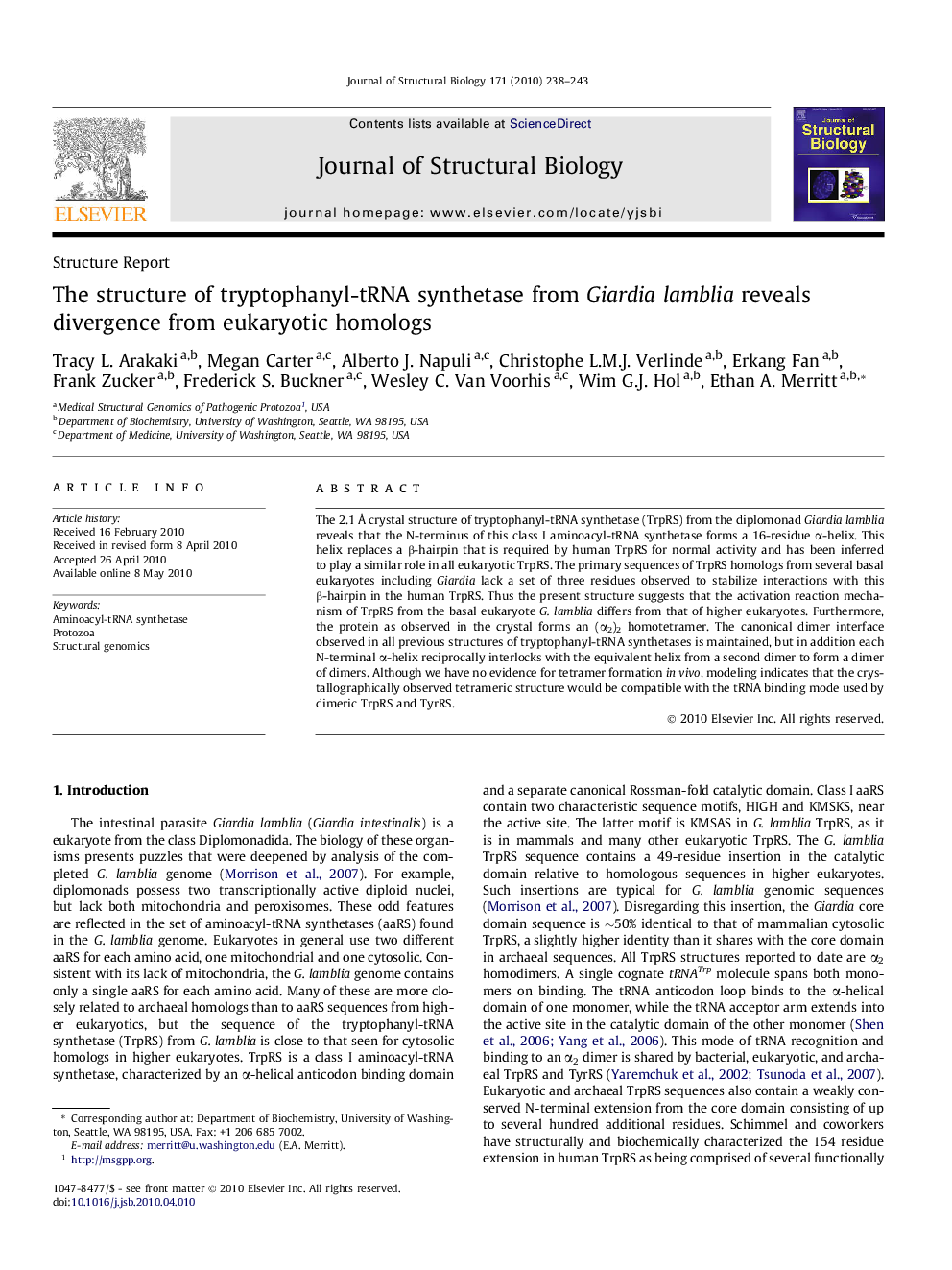| Article ID | Journal | Published Year | Pages | File Type |
|---|---|---|---|---|
| 2828849 | Journal of Structural Biology | 2010 | 6 Pages |
The 2.1 Å crystal structure of tryptophanyl-tRNA synthetase (TrpRS) from the diplomonad Giardia lamblia reveals that the N-terminus of this class I aminoacyl-tRNA synthetase forms a 16-residue α-helix. This helix replaces a β-hairpin that is required by human TrpRS for normal activity and has been inferred to play a similar role in all eukaryotic TrpRS. The primary sequences of TrpRS homologs from several basal eukaryotes including Giardia lack a set of three residues observed to stabilize interactions with this β-hairpin in the human TrpRS. Thus the present structure suggests that the activation reaction mechanism of TrpRS from the basal eukaryote G. lamblia differs from that of higher eukaryotes. Furthermore, the protein as observed in the crystal forms an (α2)2 homotetramer. The canonical dimer interface observed in all previous structures of tryptophanyl-tRNA synthetases is maintained, but in addition each N-terminal α-helix reciprocally interlocks with the equivalent helix from a second dimer to form a dimer of dimers. Although we have no evidence for tetramer formation in vivo, modeling indicates that the crystallographically observed tetrameric structure would be compatible with the tRNA binding mode used by dimeric TrpRS and TyrRS.
